The weather this week has been magical! Such a joy to be outside in the garden. Everything is bursting with new growth and blooms and wonderful fragrance. We had to make a list of 10 of our fav plants that make sense…and scents!
1. Buddleia aka Butterfly Bush

Buddleia aka Buddleja flower plumes have a soft grape-ish scent that butterflies flock to, hence their common name, butterfly bush. Grow Buddleia in full sun to partial shade. Different varieties range from 2′ to 6′ tall mature height.
2. Gardenia

Gardenias are the fragrant beauty of the South. You could describe the bloom’s scent as sweet, floral, and fresh. So gorgeous! In our area, they’re great in containers because they like well-drained acidic soil.
3. Almond Verbena

No wonder these almond-scented blooms are used to make perfumes. They smell absolutely heavenly! Humans are not the only ones who adore this large shrub/small tree. Almond Verbena is a magnet for pollinators too, especially bees and butterflies.
4. Citronella Geranium

This one might be controversial…some people can’t stand the scent of citronella geraniums while some people love it. Whether you like the scent or not, it does work well for repelling mosquitos. To maximize their mosquito repelling properties, the plants need to be disturbed to release more of their scent. Brushing them gently with a broom works great.
5. Lemongrass

Lemongrass is great in a kitchen garden – you can continually harvest shoots and leaves for cooking and tea-making, it smells amazing, and it’s so easy to grow! We also like using it elsewhere in the landscape the same way you might use other ornamental grasses. Much like other grasses, it’s cold hardy and doesn’t require much water. Plus the scent can help keep repel mosquitos.
6. Plumeria

Plumerias are back at Gill’s! Depending on the variety, the bloom scents range from soft, fruity, peachy to spicy/peppery. Plumerias are such a fun plant to grow and share. They can be cut and propagated easily, just be patient for new roots to grow.
7. Roses!

Have you stopped and smelled the roses lately?? We can’t help it! We have so many lovely scented roses that are bursting with blooms right now, like Julia Child, South Africa, the ‘Bloomable’ and ‘Livin Easy’ series, Intrigue, and one of our all time favs, Belinda’s Dream (pictured). Right now is prime time to plant and enjoy.
8. Copper Canyon Daisy

Have you ever brushed against a Copper Canyon Daisy and stirred up the refreshing, clean scent of desert rain? If you’re looking for an extremely drought-tolerant and gorgeous yellow-blooming shrub for full sun that smells incredible, you just found it!
9. Star Jasmine

Star Jasmine vines are blooming on fences and trellises all over town right now – one of our very favorite scents of spring! Not only does it smell so sweet and fresh, it’s a cold hardy, evergreen, and summer tough vine. It’s a Corpus Christi classic for many reasons!
10. Rosemary
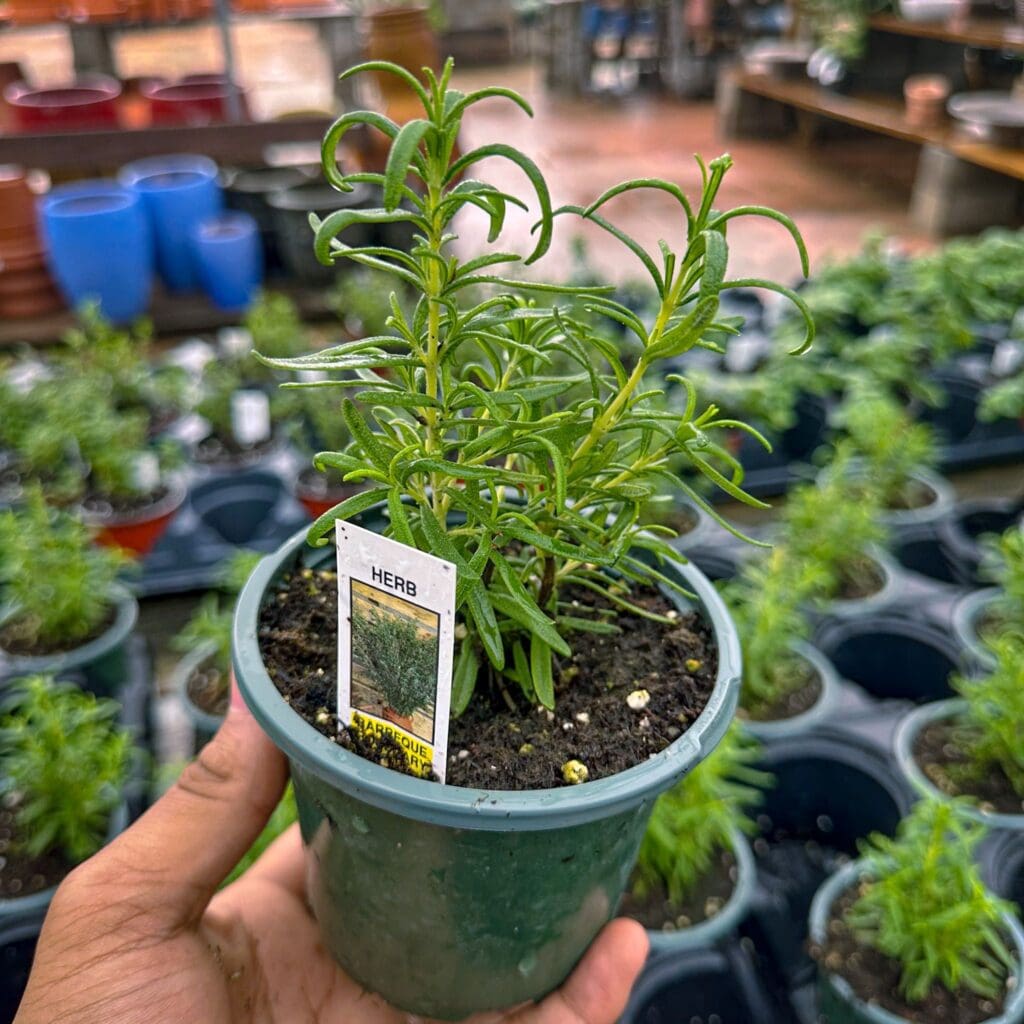
Here’s another herb that’s wonderful for cooking and as a landscape plant. There are tons of different varieties with different structure and growth habits: some upright, some crawling, and some spilling. They’re all edible and they all smell great. Try using sturdy rosemary stems as BBQ skewers. Strip most of the leaves off, skewer your fav foods, and leave some of the rosemary leaves at the end to burn and add some delicious smoky flavor.
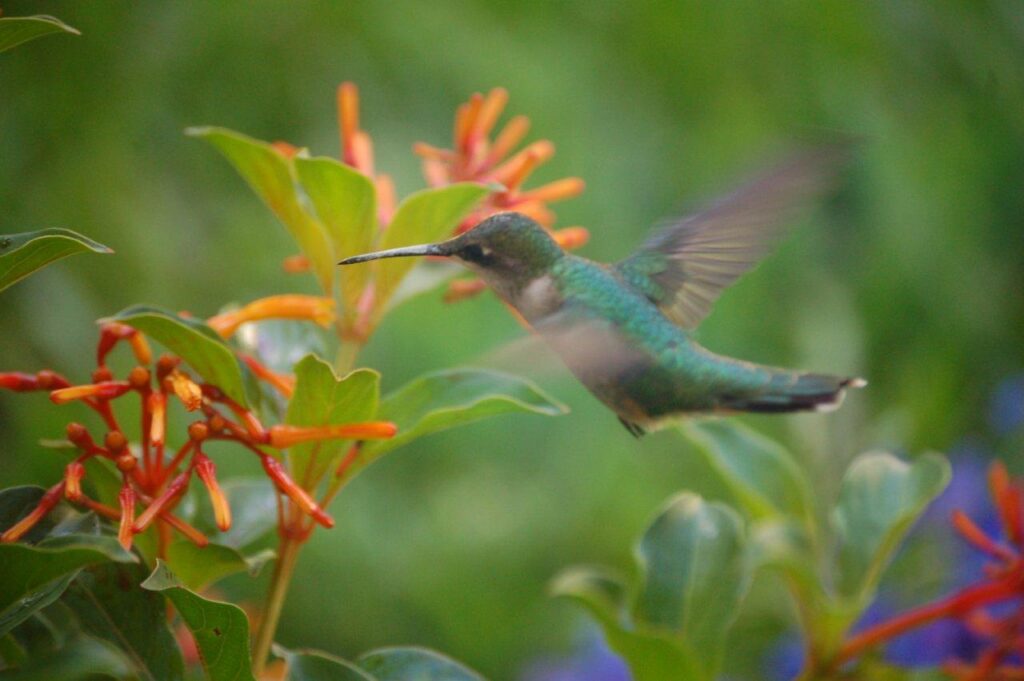
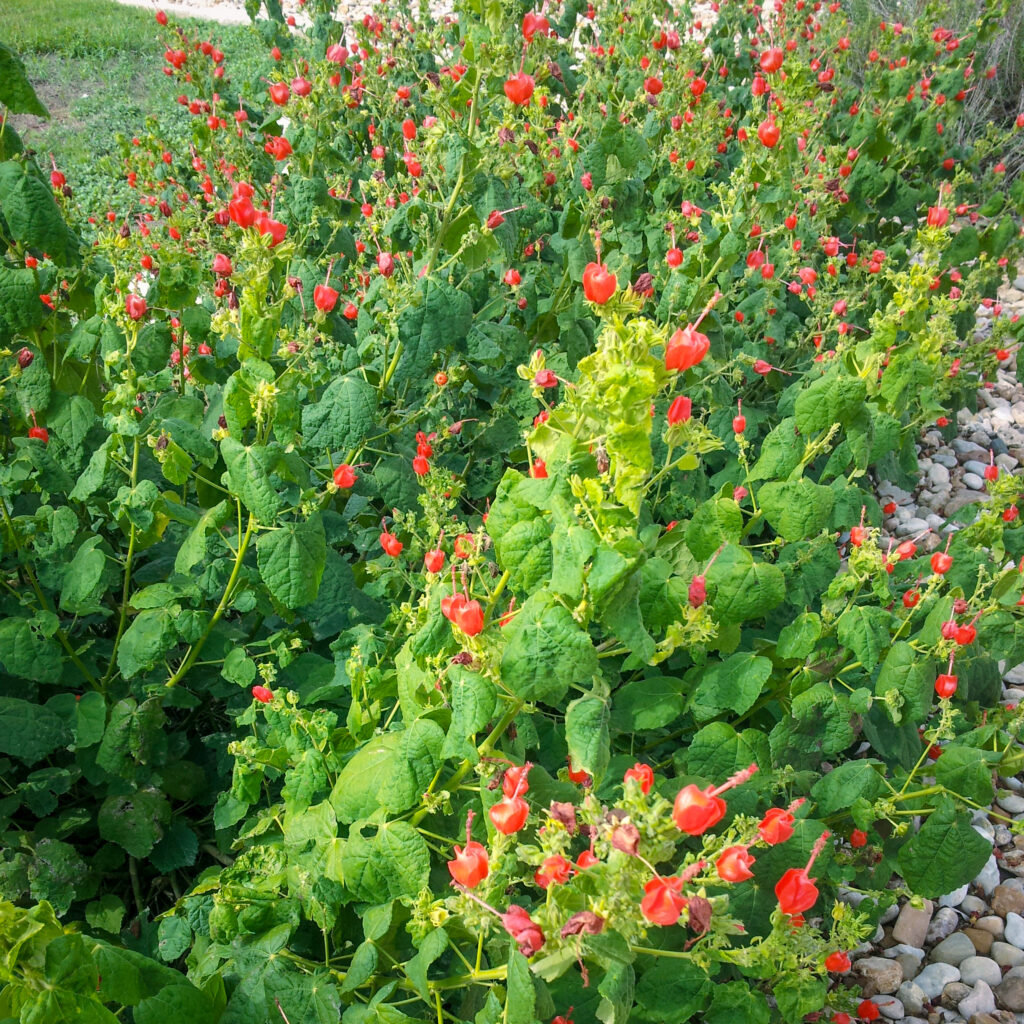





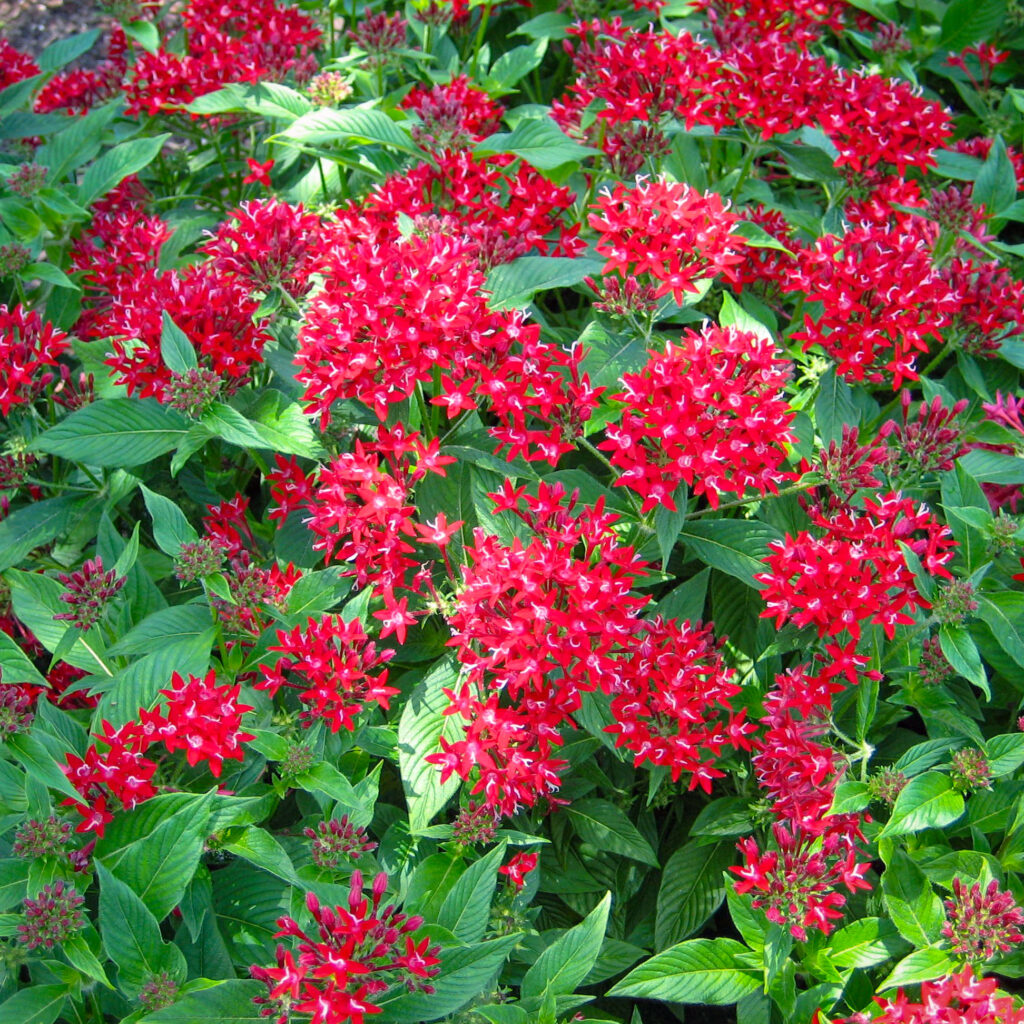

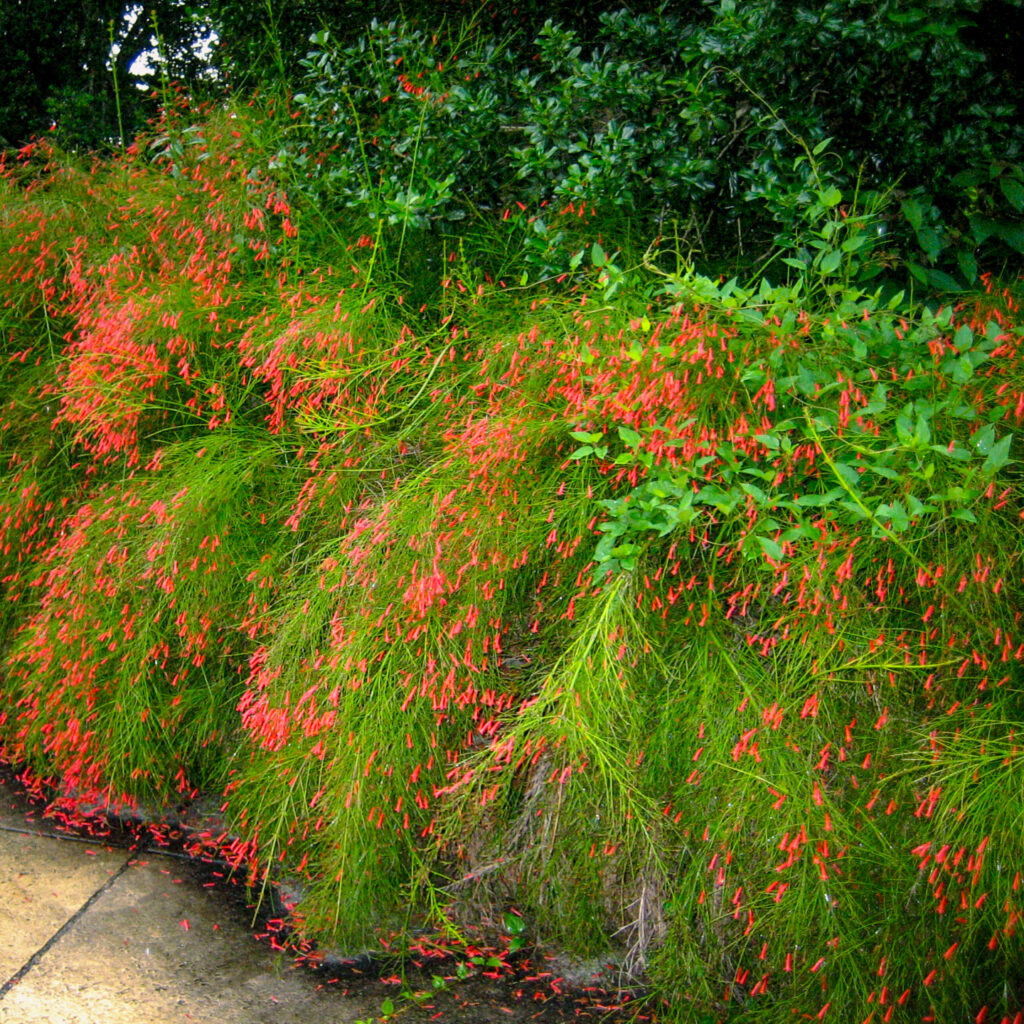
 -Debbie
-Debbie TIME TO PRUNE ROSES! Valentine’s Day is a time to remember our loved ones with candy and flowers. It also is the perfect time to prune roses. Late January to mid February is the best time. Prune established hybrid teas, removing dead and small twiggy growth, leaving strong healthy canes to a plant height of 18-24 inches. Try to prune to an outward facing bud to maintain spreading, open growth. Prune shrub roses like Knockouts 1/3 to 1/2 the plant height. Do not prune climbers until after the Spring bloom, then removing only the oldest canes and cutting back healthy, vigorous canes no more than 1/3. Remove spent blooms throughout the season on all rose varieties, cutting back to the first 5 leaflet cluster. You can also begin fertilizing your roses in late February with Bayer Systemic Rose and Flower Care, or organically with Maestro Rose Glo. Gill Landscape Nursery stocks disease resistant roses (ask for them), but if you have hybrid teas, as soon as new growth appears you should begin a spray program to control insects and diseases. Bayer 3 in 1 Insect, Disease and Mite Control, takes care of all rose problems. For organic controls, use Neem Oil for insects and disease or Serenade to control diseases. A regular spray program keeps your roses healthy and happy. Remember fungal diseases are always easier to prevent than to cure.
TIME TO PRUNE ROSES! Valentine’s Day is a time to remember our loved ones with candy and flowers. It also is the perfect time to prune roses. Late January to mid February is the best time. Prune established hybrid teas, removing dead and small twiggy growth, leaving strong healthy canes to a plant height of 18-24 inches. Try to prune to an outward facing bud to maintain spreading, open growth. Prune shrub roses like Knockouts 1/3 to 1/2 the plant height. Do not prune climbers until after the Spring bloom, then removing only the oldest canes and cutting back healthy, vigorous canes no more than 1/3. Remove spent blooms throughout the season on all rose varieties, cutting back to the first 5 leaflet cluster. You can also begin fertilizing your roses in late February with Bayer Systemic Rose and Flower Care, or organically with Maestro Rose Glo. Gill Landscape Nursery stocks disease resistant roses (ask for them), but if you have hybrid teas, as soon as new growth appears you should begin a spray program to control insects and diseases. Bayer 3 in 1 Insect, Disease and Mite Control, takes care of all rose problems. For organic controls, use Neem Oil for insects and disease or Serenade to control diseases. A regular spray program keeps your roses healthy and happy. Remember fungal diseases are always easier to prevent than to cure.




 inch wide. They are browninsh-gray to black with distinctive red markings. Boxelder babies have dull red bodies with black legs. You will find them by the hundreds, if not thousands gathered on the fence, in the bark of trees or hiding in your mulch. Adults deposit their eggs in cracks and crevices of tree bark in the spring, about the time buds begin to open. There are two or more generations per year in Texas. Boxelder Bugs are not considered to be damaging to host plants. Although they feed by sucking plant juices, they seldom cause harm to plants. They are considered more of a nuisance pest. You can choose to ignore them, or if need, they can be sprayed with any insecticide i.e. Cyonara or Triazicide. An organic alternative is Spinosad. –DeAnna
inch wide. They are browninsh-gray to black with distinctive red markings. Boxelder babies have dull red bodies with black legs. You will find them by the hundreds, if not thousands gathered on the fence, in the bark of trees or hiding in your mulch. Adults deposit their eggs in cracks and crevices of tree bark in the spring, about the time buds begin to open. There are two or more generations per year in Texas. Boxelder Bugs are not considered to be damaging to host plants. Although they feed by sucking plant juices, they seldom cause harm to plants. They are considered more of a nuisance pest. You can choose to ignore them, or if need, they can be sprayed with any insecticide i.e. Cyonara or Triazicide. An organic alternative is Spinosad. –DeAnna

 grubs.
grubs.

 Mosquito Solutions: With all the recent rains, mosquitoes are here. First of all, remove any sources of standing water (that’s where they breed). For your favorite birdbath, use Mosquito Bits in the shaker,for larger ponds or ditches, Mosquito Dunks, both totally safe for birds and frogs. We have several ways to kill, control and repel them.Mosquito Beater hose-end (Permethrin) is an easy spray to killmosquitoes, ants, fleas & tics throughout the yard. It is safe to spray on all plants where mosquitoes hide. We also carry Mosquito Beater Granules which is a combination of natural essential oils to repel. It contains citronella oil, garlic, geranium oil, cedar oil and lemon grass oil. Covers 4000 sq. ft and lasts up to 3 weeks. Patio Egg Diffuser is an easy safe and effective way to help deter mosquitoes and other biting insects from your patio, porch and other outdoor living areas. It protects up to 200 sq. ft. and comes with enough refill oil to last up to 4 months.
Mosquito Solutions: With all the recent rains, mosquitoes are here. First of all, remove any sources of standing water (that’s where they breed). For your favorite birdbath, use Mosquito Bits in the shaker,for larger ponds or ditches, Mosquito Dunks, both totally safe for birds and frogs. We have several ways to kill, control and repel them.Mosquito Beater hose-end (Permethrin) is an easy spray to killmosquitoes, ants, fleas & tics throughout the yard. It is safe to spray on all plants where mosquitoes hide. We also carry Mosquito Beater Granules which is a combination of natural essential oils to repel. It contains citronella oil, garlic, geranium oil, cedar oil and lemon grass oil. Covers 4000 sq. ft and lasts up to 3 weeks. Patio Egg Diffuser is an easy safe and effective way to help deter mosquitoes and other biting insects from your patio, porch and other outdoor living areas. It protects up to 200 sq. ft. and comes with enough refill oil to last up to 4 months.
